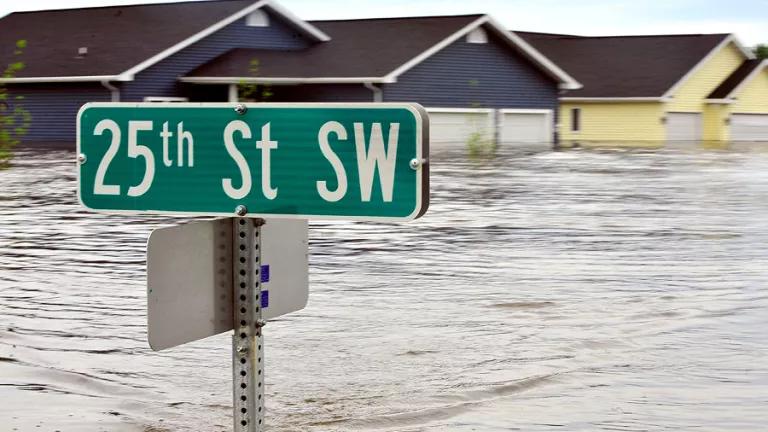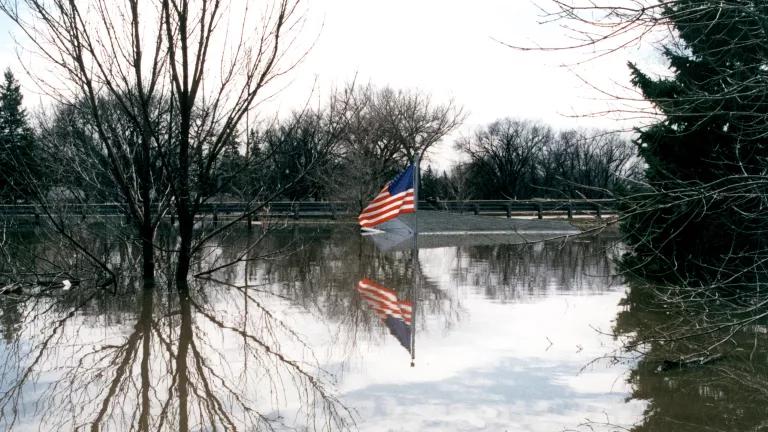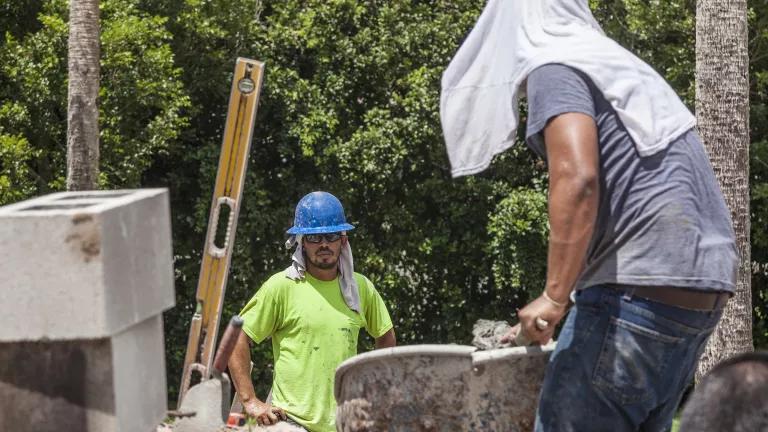In January 2015, an executive order from President Obama updated the flood protection standard that will guide the design of federally funded projects in or near floodplains or along coastlines. The standard requires federal agencies to factor in an extra margin of safety for projects that receive federal funding. This requirement will ensure that projects built today are better sited and better designed to handle a greater risk of flooding in the future.
This standard will reduce damages caused by floods and hurricanes and will help steel our nation against the increased flood risk that comes with sea level rise and climate change.
And damages from flooding are considerable. Here's how $48.6 billion in FEMA Public Assistance Grants were spent in the wake of floods each year from 1998 to 2014: These grants were predominantly used to repair or replace public buildings ($12.6 billion), public utilities ($7.4 billion), roads and bridges ($5.5 billion), and water-control facilities like levees, dams, and pumps ($1 billion). The biggest recipients were Louisiana ($13.7 billion), New York ($9 billion), Florida ($5.1 billion), Texas ($3.8 billion), and Mississippi ($3.4 billion).
These grants are just part of the enormous bill our country pays following natural disasters that cause flooding. Tens of billions in additional federal assistance often come from other agencies or after a special appropriation from Congress.
FEMA's Public Assistance Grants show a distinct pattern of areas where flood damages have already happened and often reoccur. Parts of the country have received funding multiple times due to multiple flood disasters. Some counties in Louisiana, for instance, have had 10 federal flood disasters declared since 1998.
These repeated flood events and grant payouts indicate why the Federal Flood Risk Management Standard is so important. Building in an additional margin of safety would reduce the risk of future flood damages to public facilities and infrastructure. It would also reduce the amount of post-disaster assistance—like these grants—that federal taxpayers pay out.
Related Content

NRDC's Climate Smart Flood Insurance Reforms

Victory for the Federal Flood Risk Management Standard





